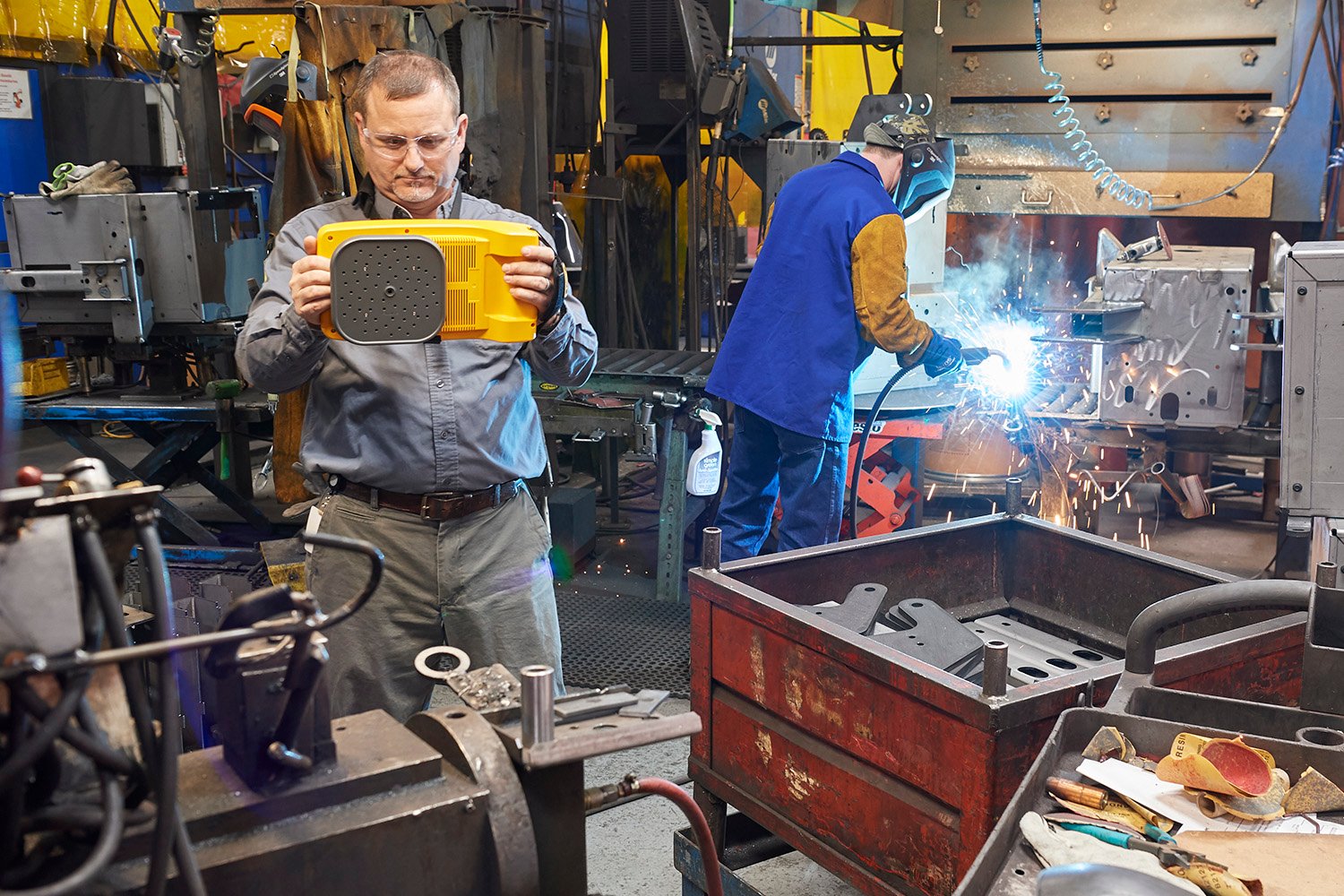Fluke interviewed a manufacturer regarding air leaks. This manufacturer literally helps keep the wheels of commerce moving. As one of the world’s foremost aftermarket manufacturers of wheel-services equipment, the company designs, builds, and markets products under trusted and distinguished brands.

Many of this manufacturer’s processes rely on compressed air to run around 400 tools in its 150,000 sq. ft. plant—all from a 200-horsepower compressor. “We use compressed air everywhere in the plant—for pneumatic drivers, robotic welders, the laser cutter, and powder coat equipment,” says the manufacturer’s president. With compressed air comes noise and—air leaks.
Controlling energy waste
Air leaks cause compressed-air-driven equipment to work harder, leading to wasted energy. The potential for air leaks in the plant is further increased by the presence of older equipment accumulated over the last few decades from various plant consolidations. Hearing air leaks can be very difficult in such a noise filled environment, so most leak detection activities are conducted after hours.
“Usually we wait till the building’s very quiet—during an off-shift or a maintenance shutdown and we just try to hear air leaks as best we can,” says the maintenance supervisor. “We also use bottles of soapy water to spray on an area that we think may have a leak and look for bubbles.” This spray and watch method requires maintenance team members to be both close enough to the potential leak to hear it and to spray the solution in the correct area.
The other method to finding compressed air leaks is to use an ultrasonic leak detector. This method requires a highly trained individual and a significant amount of time to locate all leaks. Small leaks can be particularly difficult for the human ear to hear, and not all leaks are in easily accessible areas. It can be a daunting task.
See the sound you can’t hear
When Fluke approached this manufacturer about testing its Fluke ii900 Sonic Industrial Imager (Acoustic Imager), which can pinpoint leaks from 50 meters away in a noisy environment, they were a bit skeptical, but more than willing to try it.
The testing included the maintenance lead and the maintenance technician, who alternated throughout eight hours, surveying the entire plant for leaks with two Fluke Industrial Acoustic Imager. The Fluke Industrial Acoustic Imager let them see sound as they scanned hoses, fittings, and connections for leaks. The results of their leak survey surprised the manufacturing team.
They found approximately 143 leaks—both large and small—in a single work day.
“I was questioning some of the leaks the tool was finding so I sprayed those spots with soapy water and saw that the tool was right, there was a leak where it said there was,” says the maintenance technician.
The maintenance manager was particularly impressed by the ii900’s ability to find even the smallest of leaks. “Small leaks are very difficult to find,” he says. “I noticed there were some leaks that the ii900 found that we would never have found by spraying soapy water on. We found one leak on an air line back in the paint room that we couldn’t feel by putting our hand around it or hear, but it was an obvious leak that had been there for some time.”
The ii900’s built-in acoustic array of tiny sensitive microphones generates a spectrum of decibel levels per frequency. Based on this output, an algorithm calculates a sound image known as SoundMap™ that is superimposed on a visual image. The SoundMap is automatically adapted depending on the frequency level selected so that background noise is filtered out. The SoundMap is updated on screen 10 to 20 times per second.
Long-range air leak detection
The team quickly identified a leak 26 feet up in an overhead air line.
“I was amazed at how easily you could just pick up the Fluke sonic imager and walk down the aisles scanning an overhead area and very quickly spot leaks,” says the maintenance manager.
Besides helping to find very hard-to-detect leaks, the manufacturing team believes the ii900 offers substantial potential for saving time and costs. “Once we find and fix the majority of the leaks for the first time we can probably do follow ups and scan the whole plant in about an eight-hour-shift.” This would help save overtime costs because they can scan for the air leaks during the normal day shift rather than after hours.
It also will save energy and wear and tear on the equipment. “Air leaks just draw dollars out of the company,” says the maintenance manager. “They are very difficult to locate so it’s hard to direct the maintenance team to the correct spot. The ability to take a photo of the leak with the Fluke sonic imager and send it to our maintenance teams as part of the work order is extremely valuable. We think it’ll save us a ton a money—both in labor and energy costs.”